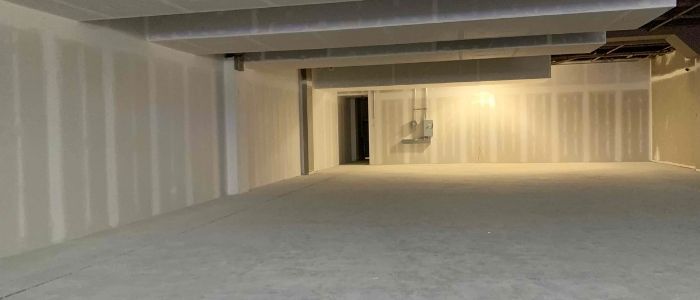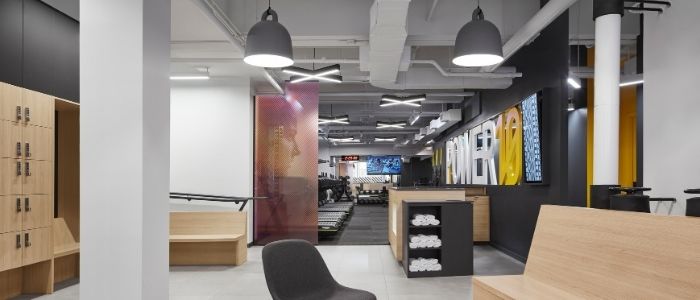Any commercial developer will inform their clients that, from start to finish, the commercial construction process is a complex undertaking. There are many moving parts involved in developing a new commercial building, while expansions and renovations of existing buildings are equally complex and detail-oriented. If you’re interested in commercial […]development and eager to partner with experts that build to hire standards, you’ll benefit from an overview of how the construction process will play out from beginning to end. This guide will present how you should prepare for a commercial construction project. It will also explore what skills and expertise to look for in a potential partner for the job.

Commercial construction process from start to finish
The process begins with an idea, a vision for a new commercial space in your city or county. You need to consider where you’ll build, nearby amenities, floorspace designs, materials to include, and the budget for the entire project. But there are many steps that go into the process. Here’s a brief rundown of the construction phases to follow when developing a new commercial project.
Planning
The planning phase is the very beginning of a commercial construction project. The planning phase is the most important piece of the development process because it lays out all of the requirements for the following phases. Furthermore, it serves as a guide for how to take the development from start to finish.
Many planners will develop cost-oriented and schedule-oriented hierarchies of decision making throughout the process. This is an excellent way to appropriate the budget and the realistic timelines for completion throughout the project. Of course, there are also a few fundamental parts of the planning phase that you need to complete before proceeding to the next steps of the construction project.
Find a location
There’s no building unless you have a site to build upon. Selecting the right location requires:
- Negotiating permits with the city or county
- Conducting environmental assessments
- Calculating the distance to nearby amenities
- Analyzing zoning bylaws
- And more
Set a budget
Once you’ve narrowed down your options to a few key locations, you need to calculate the costs to develop on those parcels of land. Use the budget you’ve allocated for the commercial development, and identify which location on your shortlist of options is closest to the budget you have on hand. This will help you determine which location is the most suitable for your plans.

Development
With a budget, a timeline, and a location in hand, you’re now ready to hire the right people to do the work. You can hire architects, project managers, construction supervisors, labourers, commercial managers, and other positions independent of each other.
But you can also connect with experts that have networks of talented tradespeople and construction experts who have experience collaborating on large-scale commercial projects. This is known as design build construction, which helps streamline the construction process so that you can achieve the end result faster and more efficiently.
Design
Once you’ve hired architects and interior designers, the design phase can commence. This is where proven designers will transform the vision of your commercial building into an architecturally sound design that illustrates how the building will appear once it’s completed.
Commercial architects go through years of training to become fully certified for their trade of choice. Make sure that the architects you partner up with have the experience and the testimonials to justify their involvement with your project.
Pre-construction
In this phase, the designs are finalized by all of the key stakeholders so that the work can begin. Expect to have a meeting between the building owner, the architect, the project manager, the construction supervisor, the commercial manager, and any other key participants necessary to sign off on the submitted designs.

Obtain Builder’s Risk Insurance
Once everyone agrees on the designs, your commercial manager will obtain builder’s risk insurance, which will protect the key stakeholders throughout the construction project. Builder’s risk insurance indemnifies the labourers for any on-site injuries that may occur over the course of the project.
Commercial & contractor insurance
Additionally, the commercial manager will obtain commercial & contractor insurance to protect the security of the project. This type of coverage protects everyone from theft, damage, property losses, and other liabilities throughout the construction.
Procurement
With insurance protection on hand, you can now begin the procurement phase of the process. This is where your project managers will source the materials for the construction. On top of that, it is when the hiring process of qualified labourers begins.
Construction
Everyone is aligned and the proper legal and financial protections are secured and in place. Now the construction can get underway. Finalizing the designs, obtaining insurance protections, and aligning all key stakeholders early in the process are all key aspects of the design build model. This enables everyone to get on the same page before the work begins. It also allows all parties to work towards one common goal as the construction begins.
Post-construction
Even after the initial construction is complete, and the building finalizes its development, the post-construction phase will keep the owner and the team busy. This phase typically involves maintenance and upkeep of the newly completed building. This is an ongoing process that carries on for years on end. You’ll want to hire maintenance crews and building managers – perhaps using services provided by BUILD IT – to handle the majority of this work as it arises over time.

How long does it take to build a commercial building
The exact timeline to complete the entire commercial construction process from start to finish varies depends on various factors. This includes the quality of tradespeople and the complexity of the building development. Moreover, how seamless the construction work commences.
As a building owner, allocate how much of your own time you can devote towards the development process to get a sense of how much time you want the work to take. In most scenarios, you can approximate that the work will take anywhere from 6 to 12 months to complete based on the size and scope of the building.
What are the 3 types of construction
There are typically three main categories for construction: buildings, infrastructure, and industrial. As a building owner, your project will most likely fall into the first category. This is because it describes the work to complete both commercial and residential buildings.
Infrastructure construction involves projects that benefit the public space, such as roads, dams, power grids, and anything in that calibre. Industrial projects involve the development of power generation mills, oil refineries, offshore developments, mining sites, and more.
Final thoughts
Commercial construction is not a process to be undertaken lightly. Overall, there are many steps involved in the process that guide the construction from start to finish. Once complete, you will have a beautiful new building standing atop the development site.
Looking for a construction partner for a turn-key solution? Our Mississauga construction location can handle it from start to finish so you can focus on the growth of the brand. Get in touch with the experts at (905) 696-0486 or email [email protected] for more details.